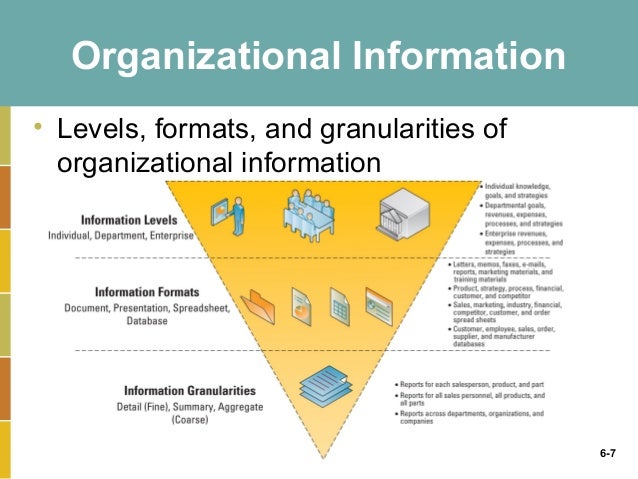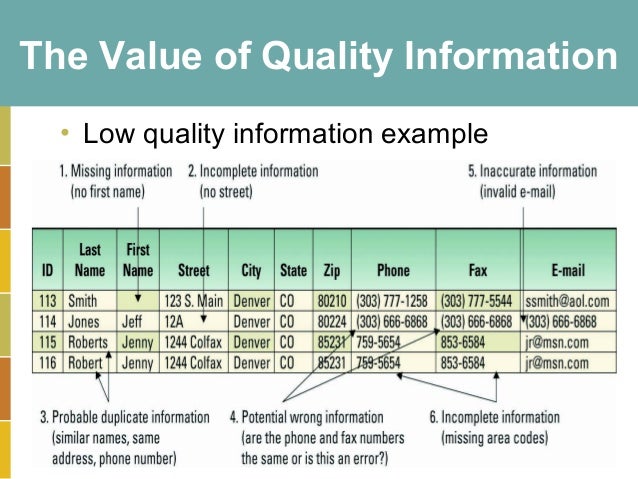- Comes at different levels and in different formats and "granularities".
- Information granularity - extend of detail within the information ( fine and detailed or coarse and abstract ).
- Successfully collecting, compiling, sorting, and finally analyzing information from multiple levels, in varied formats, exhibiting different granularity can provide tremendous insight into how an organization is performing.
The Value of Transactional and Analytical Information :
Transactional Information
- Encompasses all of the information contained within a single business process or unit of work, and its primary purpose is to support the performing of daily operational tasks.
- Example : withdrawing cash from ATM, making an airline reservation, or purchasing stocks.
- Encompasses all organizational information, and its primary purpose is to support the performing of managerial analysis tasks.
- Example : trends, sales, product statistics, and future growth projections.
The Value of Timely Information :
- Real-time information means immediate, up-to-date information.
- Real-time systems provide real-time information in response to query requests.
- The growing demand for real-time information stems from organizations' need to make faster and more effective decisions, keep smaller inventories, operate more efficiently, and track performance more carefully.
- Example : MBIA Insurance Corperation uses overnight updates to feed its real-time systems.

The Value of Quality Information :
- The first issue is missing information. The customer's first name is missing.
- The second issue is incomplete information since the street address contains only a number and not a street name.
- Third issue is probable duplication of information since the only slight difference between the two customers is the spelling of the last name. Similar street addresses and phone numbers make this likely.
- The fourth issue is potential wrong information because the customer's phone and fax numbers are the same. Some customers might have the same number for phone and fax line, but the fact that the customer also has this number in the email address field is suspicious.
- The fifth issue is definitely an example of inaccurate information since a phone number is located in the email address field.
- The sixth issue is incomplete information since there is not a valid area code for the phone and fax numbers.
Understanding the Costs of Poor Information :
- Using the wrong information can lead to making the wrong decision.
- Bad information can cause serious business ramifications such as : => inability to accurately track customers, which directly affects strategic initiatives such as CRM and SCM. => difficulty identifying the organization's most valuable customers. => inability to identify selling opportunities and wasted revenue from marketing to nonexisting customers and nondeliverable mail. => difficulty tracking revenue because of inaccurate invoices. => inability to build strong relationships with customers which increases buyer power.
- High quality information can significanly improve the chances of making a good decision and directly increase the organization's bottom line.
- High quality information does not automatically guarantee that every decision made is going to be a good one, since people ultimately make decisions.




No comments:
Post a Comment